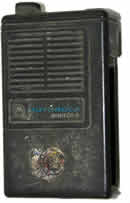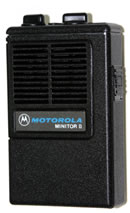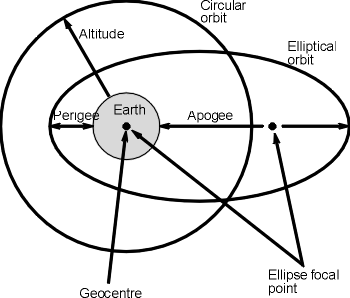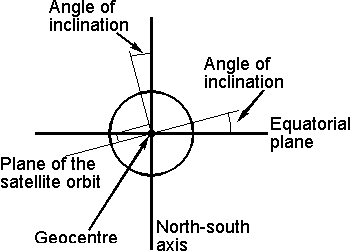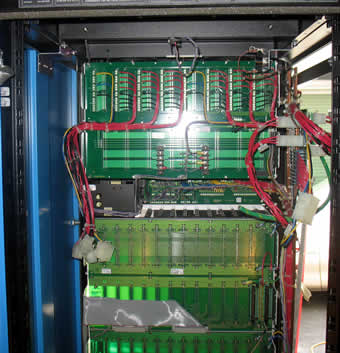BloostonLaw Telecom Update Published by the Law Offices of Blooston, Mordkofsky, Dickens, Duffy & Prendergast, LLP [Portions reproduced here with the firm's permission.] www.bloostonlaw.com |
| Vol. 13, No. 21 | May 19, 2010 |
 FCC Releases Sunshine Agenda For Its May 20 Open Meeting The FCC has released its “Sunshine Agenda” for its scheduled May 20 open meeting. Accordingly, the Commission will consider: 1. The 14th edition of the Mobile Wireless Competition Report, analyzing the state of competition in the mobile industry by expanding upon previous FCC reports and considering the broader mobile wireless ecosystem. 2. A Report and Order enabling robust mobile broadband use of 25 MHz of spectrum in the 2.3 GHz Wireless Communications Service (WCS) band while protecting neighboring incumbent operations and a Second Report and Order implementing rules for terrestrial repeaters to provide greater certainty for both satellite radio and WCS licensees. 3. A Notice of Proposed Rulemaking initiating reforms to the E-Rate program to make broadband more accessible in schools and libraries, and to cut red tape. 4. An Order and Further Notice of Proposed Rulemaking to implement the National Broadband Plan recommendations to foster competition and broadband deployment by ensuring nondiscriminatory, just, and reasonable access to utility poles. 5. A Report and Order to standardize the processes for transferring telephone numbers in one business day to ensure the benefits of competition for consumers.
BloostonLaw contacts: Hal Mordkofsky, Ben Dickens, Gerry Duffy, and John Prendergast. |
 BloostonLaw has prepared a Red Flag Compliance Manual to help your company achieve compliance Red Flag Rule enforcement takes effect June 1. with the Red Flag Rule. Please contact: Gerry Duffy (202-828-5528) or Mary Sisak (202-828-5554) with any questions or to request the manual.  INSIDE THIS ISSUE - FCC sets comment cycle for USF reform NOI & NPRM.
- Rural groups announce joint statement on USF reform NOI and NPRM.
- FCC proposes changes to Part 17 rules governing marking, lighting of towers.
- FCC sets comment dates for NPRM on Puerto Rico Link Up support.
- FCC sets comment dates for CableCARD proceeding.
|
FCC Sets Comment Cycle For USF Reform NOI & NPRM Comments Due July 12; Replies Aug. 11 The FCC published in the May 13 Federal Register the comment cycle for its Universal Service Fund (USF) Notice of Proposed Rulemaking (NPRM) that focuses on specific reforms to cap growth and to cut “inefficient” funding in the “legacy” high-cost support mechanisms and to shift “savings” toward broadband communications (BloostonLaw Telecom Update, April 28). Comments in this WC Docket No. 10-90, GN Docket No. 09-51, and WC Docket No. 05-337 proceeding are due July 12, and replies are due August 11. BloostonLaw will be preparing comments and will be contacting clients in the near future to develop information. The companion Notice of Inquiry (NOI) in this proceeding, which focuses on whether the FCC should use a model to help determine universal service support levels in areas where there is no private sector business case to provide broadband and voice services, has not been published in the Federal Register. But the comment and reply dates are the same as above, according to a May 13 Public Notice. In general, the NPRM seeks comment on capping legacy high-cost support provided to incumbent telephone companies at 2010 levels, which would have the effect of creating an overall ceiling for the legacy high-cost program. Such a cap would remain in place while the Commission determines how to distribute funds “in a more efficient, targeted manner” to those areas of the country where no firm can operate profitably without government support, while minimizing burdens on American consumers who ultimately pay for universal service through carrier pass-through charges. The FCC seeks comment on the relationship between such universal service reforms and carriers' rates, including intercarrier compensation rates, under the Commission's current pricing rules. It seeks comment both on the likely rate impacts under existing pricing rules that would arise from the possible universal service reforms and any appropriate responses. The FCC also notes that many rural rate-of-return carriers participate in the National Exchange Carrier Association (NECA) pooling process for their interstate access charges. If universal service support under the legacy programs were frozen for such carriers, are there special considerations resulting from operation of the NECA pool that would unfairly advantage or disadvantage certain carriers? The Commission seeks comment on requiring current rate-of-return companies to convert to some form of incentive regulation. It seeks comment on whether the Commission should replace rate-of-return regulation with the price-cap framework recently adopted for voluntary conversions, an alternative price-cap framework, or some other form of incentive regulation. The FCC seeks comment on whether it should convert Interstate Common Line Support (ICLS) to a frozen amount per line, which would have the effect of limiting growth in the legacy high-cost program. The FCC also seeks comment on the elimination of IAS. The National Broadband Plan recommends that the Commission phase out remaining competitive ETC funding under the existing funding mechanisms over a five-year period and target the savings toward the deployment of broadband-capable networks and other reforms in the plan. The FCC seeks comment on this proposal. BloostonLaw contacts: Ben Dickens, Gerry Duffy, and Mary Sisak. Rural Groups Announce Joint Statement On USF Reform NOI and NPRM The National Exchange Carrier Association (NECA), the National Telecommunications Cooperative Association (NTCA), the Organization for the Promotion and Advancement of Small Telecommunications Companies (OPASTCO) and the Western Telecommunications Alliance (WTA) today announced their commitment to a joint filing of a unified rural position in the National Broadband Plan's Notice of Proposed Rulemaking (NPRM) and Notice of Inquiry (NOI), which seek comment on the FCC's proposals regarding Cost Modeling and Universal Service Reform. This public commitment to a unified voice is a significant action intended to demonstrate that rural local exchange carriers (RLECs) are united in their efforts to ensure rural America's broadband infrastructure is not jeopardized by policies that discriminate against rural consumers and the RLECS that have made network investments to bring broadband to their communities. In the joint letter to the memberships, the associations outlined the key positions they will advocate: - Network design based on funding only 4 Mbps in rural areas is shortsighted and creates a digital divide compared to 100 Mbps in urban areas.
- RLECs have made significant investment in multi-use, broadband capable networks, which serve 37% of the national geography. Their continued ability to provide comparable telecommunications services to rural Americans is vital to our nation's economic development, national security and public health and safety.
- These investments have been made possible due to a time-tested cost-recovery structure consisting of rate-of-return regulation, NECA pooling, intercarrier compensation and USF support.
The FCC should now be looking to create this success story with a broadband focus and not undermine or ignore what has worked to achieve affordable and comparable services for rural consumers as required by the Communications Act. Further in the letter, the groups wrote, "In our joint comments we will be identifying significant concerns and impacts of the commission's proposal to divert high cost funding away from your companies by freezing USF/ICLS per line and forcing you to incentive regulation. We will demonstrate how you continue to have different requirements from the much larger price cap carriers and should therefore continue to have broadband-focused cost recovery mechanism designed to meet your unique service areas and rural customer requirements." BloostonLaw contacts: Ben Dickens, Gerry Duffy and Mary Sisak. FCC Proposes Changes To Part 17 Rules Governing Marking, Lighting Of Towers On April 20, the FCC released a Notice of Proposed Rulemaking (NPRM) seeking comment on revisions updating and modernizing the Part 17 rules governing the construction, marking, and lighting of antenna structures. The modernization and streamlining undertaken in the NPRM was initiated as part of the 2004 biennial review process. While much of the NPRM seeks to conform the FCC’s Part 17 Rules to the Commission’s current practices, and otherwise remove inconsistencies between the Federal Aviation Administration (FAA) and FCC processes, there are still areas which require comment. These include (1) the adverse impact of FCC’s proposed requirements on the Commission’s licensing procedures, by significantly curtailing the ability of licensees to use the FCC’s conditional temporary authority and special temporary authority (STA) options for rapid deployment; and (2) the adverse impact of mandating deletion of voluntarily registered antenna structures from the ASR database. The latter change could result in the FCC’s licensing data bases being less accurate due to the use of multiple data sets existing for the same site. Comments on the FCC’s proposals will be due 60 days after the WT Docket No. 10-88, RM-11349 item is published the Federal Register, and replies will be due 30 days thereafter. The FCC’s specific proposals are summarized below: Marking and Lighting Specifications. The Commission has sought comment on several proposed revisions to its marking, painting, and lighting provisions, including: - Elimination of specific references in the rules to particular Federal Aviation Administration (FAA) Advisory Circulars, to prevent confusion and conflict, and requiring in its place that marking and lighting conform to a particular tower’s FAA determination and associated study, unless otherwise specified;
- Implementation of a Personal Communications Industry Association (PCIA) proposal that the rules specify that lighting and marking requirements do not change unless the FAA recommends new specifications for particular structures;
- Addition to §17.4 of a provision clarifying that the FAA’s recommended specifications are generally mandatory, but that the Commission may specify additional or different requirements;
- Amendment of §17.21(a) to reference FAA notification requirements, which provides that antenna structures shall be painted and lighted when they exceed 60.96 meters (200 feet) in height above ground level or they require special aeronautical study, and deleting as unnecessary the first sentence of §17.22;
- Amendment of §17.23, as discussed above, to replace the reference to specific Advisory Circulars with a more general reference to the FAA’s determination of no hazard and associated study, and to clarify the structure owner’s obligation to comply with any other specifications prescribed by the Commission;
- Deletion of §17.17(a), which has resulted in some confusion as to what painting and lighting specifications antenna structures authorized prior to July 1, 1996, must maintain.
Accuracy of Location and Height Data. Section 17.4(a)(1) provides that alteration of an existing antenna structure requires a new registration. However, the FCC’s rules do not define what constitutes an alteration such that a new registration is required. To clarify the obligations of antenna structure owners, the FCC is proposing to add a new subsection to Section 17.4 specifying that any change in height of one foot or greater or any change in coordinates of one second or greater requires prior approval from the FAA and the Commission. As a related matter, the FCC is proposing to require that the height information provided on FCC Form 854 be accurate within one foot and the coordinates provided in FCC Form 854 be accurate within one second of longitude and latitude. Structures Requiring FAA Notification. Sections 17.7 and 17.14 of the FCC’s rules set forth which antenna structures require notification to the FAA and which categories of antenna structures are exempt from notification to the FAA. The FCC is proposing to delete these rules because they are unnecessary and duplicative, and their inclusion risks creating confusion in the event the FAA were to change its criteria. Recognition of FAA Rulemaking. The FAA’s Part 77 rules require parties proposing to construct or modify an antenna structure to file a “Notice of Proposed Construction or Alteration” (on Form 7460-1) with the FAA, which then conducts an obstruction evaluation to determine whether the proposed structure will pose a hazard to air navigation. In an NPRM released in June, 2006, the FAA proposed to modify its notification rules to require the filing of a 7460-1 clearance request in connection with (a) the construction of any new facilities that operate on specified frequency bands; (b) changes in an original frequency; (c) addition of new frequencies; (d) increases in ERP or antenna height above certain thresholds; and (e) changes in physical antenna configuration for radio facilities that operate in certain radio frequency (RF) bands. These requirements were proposed irrespective of whether the antenna structure, inclusive of itself, would have required notice to the FAA in the first instance. The FCC now seeks comment on how the outcome of the proceeding initiated by the FAA may affect any of the matters being considered in its own proceeding. In other words, if the FAA should adopt its proposed rules in whole or in part, the FCC asks whether it should modify any of its rules or change any proposed approaches to issues addressed in this proceeding. The FAA insistence on the filing of a clearance request for virtually ANY antenna placement, regardless of impact on the glide slope of nearby airports, appears to be an attempt to regulate the potential for interference to FAA radio operations (which is a function delegated by Congress to the FCC). Regardless of intent, the practical effect of this rule would be to require the filing of a clearance request in many situations that would otherwise qualify the conditional special temporary authority or STA, making it difficult for licensees to move quickly when urgent circumstances arise. In general, temporary authority does not apply to situations in which a 7460-1 is pending. Maintenance of Marking and Lighting. The FCC’s Part 17 rules include certain requirements pertaining to the maintenance of marking and lighting on antenna structures. These requirements, set forth in Sections 17.47, 17.48, and 17.56(a), include inspection and maintenance of lighting, records of extinguishment or improper functioning of lights, and maintenance of painting. PCIA has recommended amendment of §17.47(b) of the rules to exempt systems using network operations control (NOC) center-based monitoring technologies from any requirement to regularly inspect all automatic or mechanical systems associated with antenna structure lighting. The Commission seeks comment on two possible alternative changes to §17.47: deletion of §17.47 of the rules in its entirety, or amendment of §17.47(b) to exempt certain systems using NOC center-based monitoring technologies from the requirement to quarterly inspect all automatic or mechanical systems associated with antenna structure lighting. With respect to time frames for replacing or repairing extinguished lights, the FCC is proposing to require antenna structure owners to provide continuously active NOTAM notice to the FAA of these lighting outages in accordance with current FAA requirements. If adopted, antenna structure owners would be required to contact the FAA to extend the lighting outage date after 15 days and provide a return to service date. Elimination of Unnecessary Provisions. Sections 17.45, 17.51, and 17.56(b) set forth specific requirements for antenna structure owners to follow in exhibiting or maintaining lights. Section 17.45 of the rules specifies the type of temporary warning lights to be used during construction of antenna structures for which red obstruction lighting is required; Section 17.51 of the rules requires red obstruction lighting to be on from sunset to sunrise and high intensity and medium intensity lighting to burn continuously; and Section 17.56(b) requires that the flash tubes in a high intensity obstruction lighting system shall be replaced whenever the peak effective daytime intensity falls below 200,000 candelas. The Commission is proposing to delete these rules because the relevant requirements are specified in the FAA determination of no hazard and associated study for each tower, and separate identification of specific requirements in the rules is may create ambiguity in cases of conflict. Records of Extinguishment or Improper Functioning of Lights. Section 17.49 of the rules requires antenna structure owners to maintain a record of observed or otherwise known extinguishments or improper functioning of structure lights. The FCC is proposing to amend this provision by adding a requirement to maintain such records for two years and provide the records to the Commission upon request. Maintenance of Painting. Section 17.50 of the FCC rules specifies that antenna structures requiring painting under Part 17 shall be cleaned or repainted as often as necessary to maintain good visibility. The FCC seeks comment on whether to amend Section 17.50 to specifically provide for use of the FAA’s ‘In Service Aviation Orange Tolerance Chart’ to determine whether a structure needs to be cleaned or repainted. The FCC believes that adding a specific reference to the color chart in Section 17.50 could provide a more objective standard for gauging the condition of required painting and may provide better guidance for antenna structure owners and promote consistent enforcement.
Definitions. Section
17.2(a) of the rules defines
an “antenna structure” as
including “the radiating
and/or receive system, its
supporting structures and any
appurtenances mounted thereon.” Section
17.2(c) defines an “antenna
structure owner” as the
individual or entity vested
with ownership, equitable ownership,
dominion, or title to the antenna
structure. Because the definition
of “antenna structure” includes
antennas and other appurtenances,
the definition of “antenna
structure owner” could
be read to include the service
providers who own these antennas.
The FCC is therefore proposing
to amend its rules to clarify
that the obligations of antenna
structure owners fall only
on the owner of the underlying
structure. As a related matter,
Section 303(q) of the Act provides
that “[i]n
the event that
the tower ceases
to be licensed
by the Commission
for the transmission
of radio energy,
the owner of
the tower shall
maintain the
prescribed painting
and/or illumination
of such tower
until it is
dismantled.
. .” Consistent
with this provision,
the FCC is proposing
to amend Section
17.2(a) to provide
that a structure
will continue
to be considered
an antenna structure
and subject
to Part 17 requirements
until such time
as that structure
is dismantled,
regardless of
whether the
structure continues
to be used for
the transmission
and/or receipt
of radio energy.
Structures Not Requiring Registration. Under the Commission’s rules, not all antenna structures are required be registered with the FCC, only those of certain heights, depending on their location. Despite this limitation, however, some antenna structure owners have voluntarily registered their structures with the Commission, even though such registration is not required. The FCC seeks comment on whether the rules concerning antenna structures should be enforced against such voluntarily registered structures. In addition, the FCC seeks comment on whether owners of antenna structures that do not require registration should be prohibited from registering their towers, and whether antenna structure owners who have voluntarily registered structures should be required to withdraw their registrations from the Commission’s antenna structure database. Such an action could reduce confusion concerning the regulatory status of these structures. Posting of Antenna Structure Registration Number. Section 17.4(g) of the FCC rules provides: “Except as provided in paragraph (h) of this section, the Antenna Structure Registration number must be displayed in a conspicuous place so that it is readily visible near the base of the antenna structure.” However, some have noted that it is not always possible to post the ASR number so that it is both “readily visible” and “near the base” of the tower. The FCC is therefore proposing to modify Section 17.4 to require that antenna structure owners display the ASR number so that it would be visible to a member of the general public who reaches the closest publicly accessible location near the base of the antenna structure. Where two or more separate locations of this nature exist for a single antenna structure, such as two roads from different directions to a mountaintop site, we would require posting the Antenna Structure Registration number at each such location. Provision of Antenna Structure Registration to Tenants. Section 17.4(f) requires that antenna structure owners immediately provide copies of FCC Form 854R (antenna structure registration) to each tenant licensee and permittee. PCIA, CTIA and Cingular have proposed that the FCC eliminate this requirement and shift the burden to the Commission’s licensees and permittees to obtain a copy of the Form 854R from the Commission’s website. The FCC agrees, but it believes it is essential that the tenant licensees and permittees know when the antenna structure has been registered, and how to access the registration form. The FCC has therefore proposes to amend the relevant rules to allow antenna structure owners, as an alternative to providing a copy of Form 854R, to notify tenant licensees and permittees that the structure has been registered, and give the tenant licensees and permittees the antenna structure’s registration number along with the link for the Commission’s antenna structure registration website. This notification may be done using paper mail or electronic mail. Notification of Construction or Dismantlement. Section 17.57 requires that antenna structure owners notify the Commission within 24 hours of construction or dismantlement of an antenna structure, and immediately for changes in height or ownership. PCIA recommends changing Section 17.57 to harmonize the timing for these requirements with FAA rules. In its Petition for Rulemaking, PCIA indicates specifically that its proposal in this regard would be to change from 24 hours to five days the time for notification of construction or dismantlement, and to change from “immediately” to five days the time for notification of changes in height or ownership. The FCC has tentatively concluded that it should not adopt these proposals. Facilities on Federal Land. Section 17.58 of the FCC’s rules provides that any application proposing new or modified transmitting facilities to be located on land under the jurisdiction of the U.S. Forest Service or the Bureau of Land Management shall include a statement that the facilities will be so located, and that the applicant shall comply with the requirements of Section 1.70 of the rules. As Section 17.58 was intended to promote compliance with procedures that no longer exist, the FCC is proposing to delete Section 17.58. Tower Compliance Manual. BloostonLaw has assembled a compliance manual for all tower/antenna structure owners, as well as any licensee mounting antennas on structures. The manual helps structure owners and licensees avoid FCC fines, minimize Federal and state approval delays, and minimize or avoid the potential for civil and/or criminal liability that could be associated with tower operations/accidents. The manual includes a detailed explanation of FCC, FAA and other Federal regulatory requirements so that your staff can understand the legal do’s and don’ts associated with tower construction and antenna mounting. We have also developed checklists that can be used by your employees and contractors to (1) make sure that necessary compliance steps are taken and (2) create a paper trail documenting such compliance. There are separate checklists for antenna structure owners and radio licensees that will use such structures. These checklists cover such issues as environmental protection, historic preservation, harmful RF radiation limits, interference protection, aviation safety, and Federal reporting requirements. A sample tower log is included. In recent years, tower owners have faced million dollar fines and even higher civil liabilities due to rule violations that may contribute to an aviation accident. Similar liability can arise from environmental or harmful radiation violations. Also, many licensees do not realize that, for every antenna mounted in the United States, the licensee must either obtain the prior approval of the applicable State Historic Preservation Officer (SHPO), or establish that the antenna qualifies for an exemption from this requirement. BloostonLaw is offering its antenna structure compliance manual in binder format, with the checklists provided on CD-ROM as well, so that you can print off the appropriate checklist for each new structure or antenna. Please contact the firm for a copy of the manual. BloostonLaw contacts: Hal Mordkofsky, John Prendergast, Richard Rubino, and Cary Mitchell. FCC SETS COMMENT DATES FOR NPRM ON PUERTO RICO LINK UP SUPPORT: On April 16, 2010, the FCC released an order and notice of proposed rulemaking (NPRM) that, among other things, sought comment on a proposal to provide additional universal service Link Up support to help defray charges incurred by telecommunications carriers when they must build special facilities to serve certain customers in Puerto Rico (BloostonLaw Telecom Update, April 21). The Commission set the comment and reply comment deadline for the Puerto Rico Order and Second NPRM as 30 and 45 days, respectively, after publication of the summary of the NPRM in the Federal Register. On May 7, 2010, a summary of the NPRM appeared in the Federal Register. Accordingly, comments in this WC Docket No. 03-109 proceeding will be due on June 7, 2010, and reply comments will be due on June 21, 2010. BloostonLaw contacts: Ben Dickens, Gerry Duffy, and Mary Sisak. FCC SETS COMMENT CYCLE FOR CABLECARD PROCEEDING: The FCC has set comment dates for its Fourth Notice of Proposed Rulemaking (NPRM) proposing new rules designed to improve the operation of the CableCARD regime in the interim until a successor solution becomes effective. As discussed in a companion Notice of Inquiry (see separate story below), the Commission acknowledges it has not been fully successful in implementing the command of Section 629 of the Communications Act to ensure the commercial availability of navigation devices used by consumers to access the services of multichannel video programming distributors (MVPDs'). The Notice of Inquiry begins the process of instituting a successor to the CableCARD regime that has been the centerpiece of the Commission's efforts to implement Section 629 to date. The CableCARD is a security device provided by the cable provider and inserted into a retail navigation device (including digital cable ready televisions) bought by a consumer in the retail market or a set-top box leased from the cable provider. Unfortunately, in practice, cable customers who purchase retail navigation devices and connect these devices to their cable service using CableCARDs for conditional access typically experience additional installation and support costs and pay higher prices than those who lease set-top boxes from their cable company. Accordingly, in this Fourth Further Notice of Proposed Rulemaking, we seek comment on proposed rules designed to remove this disparity in the subscriber experience for those customers who choose to utilize a navigation device purchased at retail as opposed to leasing the cable providers' set-top box. Comments in this CS Docket No. 97-80 and PP Docket No. 00-67 proceeding are due June 14, and replies are due June 28. Written PRA comments on the proposed information collection requirements must be submitted to the Office of Management and Budget (OMB) by July 13. BloostonLaw contact: Gerry Duffy. FCC SETS COMMENT DATES FOR NOI ON SMART SET-TOP VIDEO DEVICES: The FCC has set a comment cycle for its Notice of Inquiry (NOI) seeking comment on ways to unleash competition in the retail market for smart set-top video devices that are compatible with all multichannel video programming distributor (MVPD) services. The FCC said the goal of this proceeding is to better accomplish the intent of Congress as set forth in section 629 of the Communications Act. In particular, the FCC wishes to explore the potential for allowing any electronics manufacturer to offer smart video devices at retail that can be used with the services of any MVPD and without the need to coordinate or negotiate with MVPDs. The FCC believes that this could foster a competitive retail market in smart video devices to spur investment and innovation, increase consumer choice, allow unfettered innovation in MVPD delivery platforms, and encourage wider broadband use and adoption (BloostonLaw Telecom Update, April 21). Comments in this MB Docket No. 10-91, CS Docket No. 97-80, and PP Docket No. 00-67 proceeding are due July 13, and replies are due August 12. BloostonLaw contact: Gerry Duffy. HIGH COURT REJECTS CABLE TV APPEAL OF “MUST CARRY” RULE: The U.S. Supreme Court has declined to hear a challenge from cable TV companies to the 18-year-old requirement that they “must carry” local broadcast stations on their systems, according to the New York Times. The Court turned down an appeal from Cablevision Systems Corp. In doing so, the Court left in tact the federal ''must carry'' law, enacted in 1992 when cable TV systems faced much less competition than they do today. Cablevision sued the FCC over its ruling that forced Cablevision to carry the signal of a distant home-shopping station on its Long Island cable systems. The 2nd U.S. Circuit Court of Appeals in New York upheld the Commission. As noted on Scotusblog, “The industry argued that competition has grown so much in the communications industry since the 1990s that local broadcasters no longer needed the ‘must carry’ option in their broadcast areas, and thus it violates cable operators’ First Amendment rights to choose their own programming. …The FCC, in reply, contended that the realities of commercial life in local over-the-air TV broadcasting still justify the must-carry rule’s enforcement.” VERIZON WIRELESS WANTS TO PARTNER WITH RURAL CARRIERS TO EXPAND ITS LTE NETWORK: Reuters and the Wall Street Journal report that Verizon Wireless wants to partner with rural carriers to accelerate the expansion of the high-speed wireless network it is building. Chief Technology Officer Tony Melone said last week during a New York investor conference. According to Reuters, Melone was responding to a question about how much Verizon would go into rural markets with the network based on Long Term Evolution (LTE). Verizon plans to launch LTE services in up to 30 markets with a total population of about 100 million by year-end. "Rural carriers can use our spectrum," Melone said after his presentation at a Jefferies investor conference in New York. "We absolutely believe (in) partnering with rural carriers and getting LTE out there quicker than we would have," according to Reuters. FCC Chairman Julius Genachowski and Commissioner Meredith Baker said "the news of Verizon Wireless’ plan to partner with rural providers to accelerate investment in 4G networks is very encouraging" and that they looked forward to learning more about it. In an interview with the Wall Street Journal, Verizon Wireless CEO Lowell McAdam said “these rural markets would take us a while to get to.” Under the proposed arrangements, Verizon would license spectrum for a small fee to local carriers, which would sell the service. Either Verizon or the carrier could handle the job of installing the equipment. Verizon is also striking data roaming agreements with the rural carriers to let their customers use the rest of Verizon's network when they're traveling. BloostonLaw contacts: Hal Mordkofsky, John Prendergast, and Cary Mitchell. FCC DENIES PCS APPLICATION FOR REVIEW FOR FAILURE TO SHOW SUBSTANTIAL SERVICE: The FCC has denied an Application for Review filed by Scott D. Reiter related to the automatic termination of a Personal Communications Services (PCS) license for failure to show substantial service. (Ed. Note: This is NOT the Scott Reiter who recently retired from NTCA.) The FCC found that construction of a single base station coupled with the use of four handsets, in an area already served by four other wireless providers, does not constitute “substantial service” or a “niche service.” Accordingly, the FCC affirmed the Wireless Telecommunications Bureau Mobility Division’s determination that the license previously authorized to Scott D. Reiter automatically terminated on the date of the licensee’s construction deadline for failure to meet the applicable construction requirements. On August 22, 2001, the Commission granted Reiter a 10 MHz C-Block PCS license for Basic Trading Area (BTA) 359 in Portsmouth, Ohio. The License had a five-year construction deadline of August 22, 2006 and a license expiration date of August 22, 2011. In 2006 and 2007, Reiter submitted his construction notification and requisite maps purporting to demonstrate substantial service. In his submission, Reiter stated that 11.4 percent of the Portsmouth BTA (10,636 people) was capable of receiving reliable service from the single base station constructed in his system. Reiter further stated that the Portsmouth BTA consisted of two counties with a total population of 93,287 — Lewis (population 14,902) and Scioto (population 79,195). Reiter described the BTA as consisting of two of the “most depressed rural counties in the United States.” Portsmouth, the largest city in the BTA, had a population of 20,909 or 22 percent of the BTA. Reiter stated that after studying the market at great length he determined that a “conventional buildout and mobile operation was not viable” and that the market presented “formidable challenges” for another mobile service provider. As a result, Reiter stated that he decided to address a “niche” in the market by providing free local phone service to the residents of the Scioto County Homeless Shelter located in Portsmouth. Reiter stated that he had constructed a single base station using a single UTStarcom Internet Protocol Digital Subscriber Line Access Multiplexer unit and four handsets that were made available on an “as needed” basis to the Shelter’s residents, which numbered up to 200 residents annually. Reiter also stated that the single base station covered approximately 11.4 percent of the population of the BTA. Based on this coverage, Reiter stated that he “should therefore be deemed to have met [his] five-year construction requirement.” On May 9, 2007, the Division rejected Reiter’s Showing. The Division determined that Reiter failed to meet the substantial service requirement because his conventional two-way mobile phone service was not a niche service under the PCS rules. The Division found that Reiter failed to demonstrate how his system – consisting of a single base station and four activated handsets – was service that was “sound, favorable, and substantially above a level of mediocre service which might just minimally warrant renewal.” In addition, the Division noted that Reiter’s planned future construction was not material to his showing. The FCC agreed with the Division and denied the Application for Review. It did not reach the question of whether the substantial service standard should be different when applied to the provision of private mobile radio service (PMRS), “because Reiter’s service does not qualify as PMRS.” The FCC concluded that “Reiter has built the barest of systems (a single base station at a single location) which supports very minimal usage (4 handsets).” Special Temporary Authority (STA) was granted so the Shelter could transition to another provider, and Reiter was ordered to cease operations. BloostonLaw contacts: Hal Mordkofsky, John Prendergast, and Cary Mitchell.
FCC GRANTS 21 CONDITIONAL WAIVERS TO CITIES, COUNTIES, STATES FOR BUILDING 700 MHz BROADBAND NETWORKS: The FCC has granted conditional approval of 21 petitions filed by cities, counties and states that sought waivers to move forward with the construction of regional or statewide interoperable wireless broadband networks in the 700 MHz public safety broadband spectrum. The Commission required these broadband networks to be deployed under a common interoperability framework in coordination with the FCC’s Emergency Response Interoperability Center (ERIC). This common framework will ensure that all networks being deployed are technically compatible and fully interoperable. To ensure compatibility and interoperability of public safety broadband networks, the Order set forth the following conditions that each waiver recipient must meet: Comply with certain initial technical requirements, including: - Nationwide network interoperability;
- Mandatory use of the Long Term Evolution (LTE) air interface standard, recognizing the unique circumstances associated with the 700 MHz band and the need to achieve interoperability;
- Network support for certain applications, including access to the Internet, to an incident command system, and to field-based server applications; and
- Use of certain system characteristics, including security features.
- Submit technical deployment and conformance testing plans to ERIC, specifically including plans for achieving and maintaining interoperability with all public safety broadband network deployments in the 700 MHz band. Petitioners must also implement all phases of technical requirements adopted by the Commission.
- Participate in demonstration network testing being sponsored by the NIST/NTIA Public Safety Communications Research program and the District of Columbia.
- Offer service and/or access to all designated public safety agencies within the network coverage area.
- Enter into a standard form spectrum lease with the Public Safety Spectrum Trust (PSST), which holds the national license for the public safety broadband spectrum. The PSST may charge a limited administrative fee as part of the lease arrangement, but only after first submitting a proposed budget for public comment and approval by the Public Safety and Homeland Security Bureau.
- Submit quarterly progress reports to the Commission, in consultation with the PSST.
With respect to the designation of the LTE air interface standard, the FCC stated that it was not endorsing LTE technology, but noted that requiring a single air interface standard for 700 MHz waiver applicants was reasonable to ensure interoperability—“and specifically the use of at least 3GPP Standard, Evolved Universal Terrestrial Radio Access (E-UTRA), Release 8 (LTE), and associated Evolved Packet Core (EPC). While we recognize that the Commission does not typically require the use of a particular technology or standard, exceptions have been made in the context of nascent technologies and in the context of public safety to facilitate interoperability.” Overall, the FCC granted conditional relief to all states, counties, and cities that have submitted waiver petitions. The Commission denied the waiver request submitted by Flow Mobile, a commercial vendor, because commercial entities are ineligible under existing law to be licensed on the public safety spectrum. FCC SEEKS COMMENT ON TECHNICAL ISSUES RELATED TO 700 MHz PUBLIC SAFETY BROADBAND NETWORKS: On May 13, the FCC released an order granting conditional waivers to 21 public safety entities for early deployment of public safety broadband networks in the 700 MHz public safety broadband spectrum (PSBB Block) (see story above). The Waiver Order establishes technical, operational and governance conditions for early deployment and requires each Petitioner to submit to the Bureau, within a specified time window, a detailed plan for achieving interoperability with other public safety broadband networks. The release of this order is a major step towards development of a nationwide public safety broadband network. However, there remain open several key technical issues focused on network deployment. In this Public Notice, the Public Safety and Homeland Security Bureau seeks further comment on interoperability, out-of-band emissions, and equipment certification surrounding public safety broadband network interoperability which will serve the basis for final rules for the public safety broadband network. Comments in this PS Docket No. 06-229 proceeding are due June 17. There is no date for reply comments. BloostonLaw contacts: Hal Mordkofsky, John Prendergast, and Cary Mitchell.  This newsletter is not intended to provide legal advice. Those interested in more information should contact the firm. |

















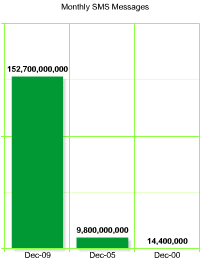
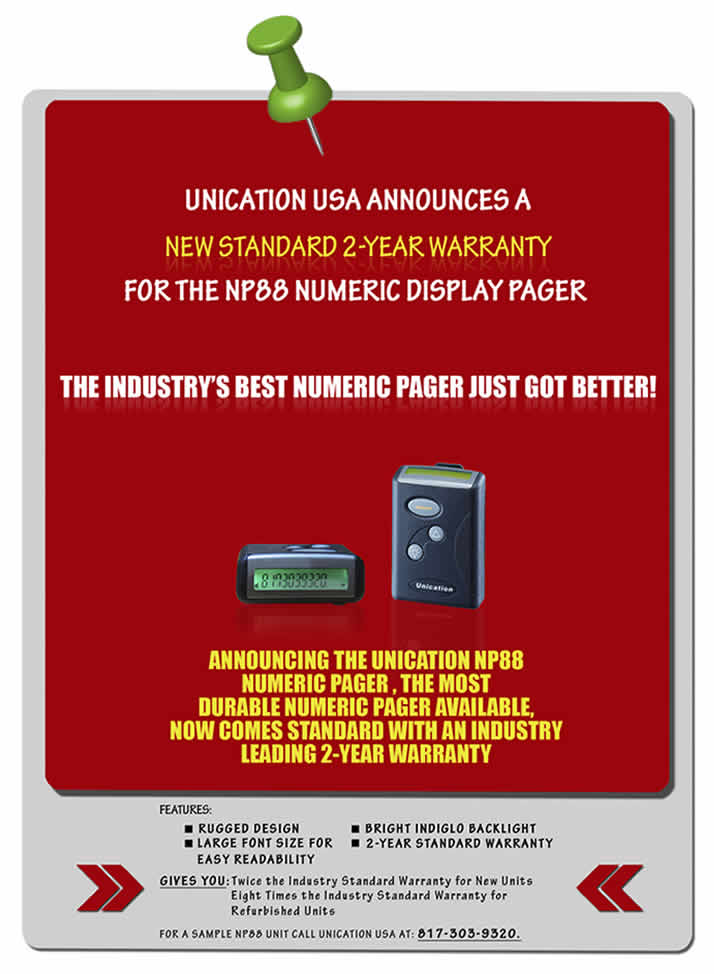







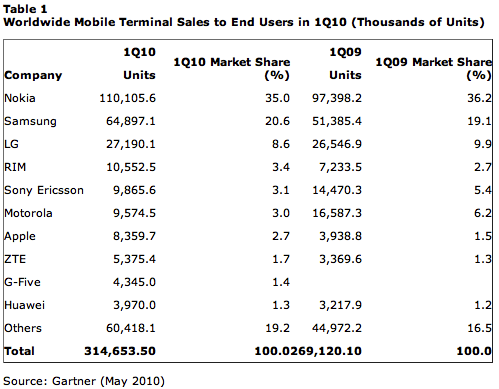








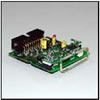
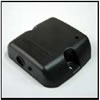



 When
was the last time you called someone
on your cell phone? 90 percent of households
have one, and according to the CTIA wireless
association, you'd rather use your cell
to text
and browse the Internet than to make
calls — the number
of text messages sent was up 50 percent
last year, while data for web browsing,
music streaming, and e-mail surpassed
data used for voice calls.
When
was the last time you called someone
on your cell phone? 90 percent of households
have one, and according to the CTIA wireless
association, you'd rather use your cell
to text
and browse the Internet than to make
calls — the number
of text messages sent was up 50 percent
last year, while data for web browsing,
music streaming, and e-mail surpassed
data used for voice calls.
